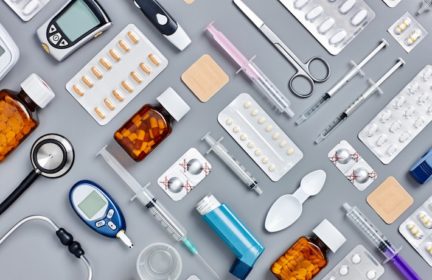Celebrate National Preparedness Month (spread the word, give gifts)
A recent poster was inspired by National Preparedness Month to start a post collecting tips. I had one that I thought might work as its own topic – and that is to use National Preparedness Month as a way to spread the word!
Many people struggle with how they can convince the people around them to become more prepared, or whether they even should try (OpSec!!!). ThePrepared has a great article on this. It’s important to spread the word because the more prepared the people around you are, the more prepared you are! National Preparedness Month is a terrific opportunity to encourage others to prep, and will give a huge boost to your efforts – because it’s not just coming from you, it’s a whole national program. You are just spreading the word. Plus it happens in a month where there are typically a lot of emergencies (wildfires, hurricanes) so preparedness is probably already in the back of their minds. A few tips on how you can use the occasion to get others to prepare:
1. Give gifts. OK, your family and close friends probably already know you are a wacky prepper. You’ve probably tried to convince them. So instead of another paranoid plea, make it an occasion and give a gift! 3 days worth of bottled water, or a couple of headlamps, would be affordable options. Plenty of more expensive ideas out there if you have the money! Water filters, NOAA emergency radio, a tub of emergency supplies, fire extinguisher, 3-day emergency food bucket – lots of options. Make it lighthearted and fun.
2. Social Media. A quick post saying it is National Preparedness month, with a link, and giving 1-3 simple ideas for getting started. DON’T make it overwhelming with a giant list or scare stories! Huge lists are the quickest way to get people to tune out. You know all those ads that talk about “One weird trick” or “Do this ONE thing every day” – that’s because people want ONE simple thing to do! I suggest water on my Preparedness Month Facebook post because it’s so basic, important, easy and cheap and not a lot of people store it. If you are really into it, you can offer ONE simple tip per day on your social media for the whole month. Be bright and positive and don’t talk about doomsday scenarios or total collapse. Keep the focus on preparing for short term emergencies, because that’s achievable. Throw in a link to ready.gov, especially this build-a-kit link: https://www.ready.gov/kit
3. Work, neighborhood groups, school and scouts. Any groups you are a part of may be interested in preparedness. Your work probably has an emergency plan – ask about it, maybe offer to help with it or just suggest an employee email updating everyone about emergency procedures. If you are a part of a neighborhood organization or Facebook group, that is a PERFECT way to share a link about National Preparedness Month and possibly some local resources. You could take it much further like developing a neighborhood emergency plan, but even just sharing https://www.ready.gov/kit on your neighborhood email list could make your neighborhood more secure and prepared. You can look into your school’s lesson plans, you can get scouts involved in projects. Use National Preparedness as a jumping off point so it’s not about you being a prepper – it’s about a national program that everyone can participate in.
I’m going to post the text of my recent facebook post below, feel free to adapt it. Happy Prepping!
—————-
It’s National Preparedness Month! Here’s a reminder to get yourselves some basics if you don’t have them already. Already got supplies? It’s a good time to check your supplies and replace anything that’s expired-or set a new preparedness goal!
Here are a few absolute basics if you want to start out.
1. Water. Get 3 days worth of bottled water (1 gallon per person per day) to start with. More is better – aim for 1 week or 2 if you have the space. The crinkly, milk-jug type of plastic will eventually leak. I like the 3 liter Poland Springs bottles.
2. Food. Have some food on hand that can be prepared with minimal power or water, like canned soup, peanut butter, etc. You can keep this in a separate kit or just make a habit of having extra in your pantry. You can also buy one of those 3-day emergency food kits. Kinda pricey but they last a long time and are portable.
3. Emergency kit. You can start a kit with supplies often needed in an emergency- at minimum, batteries, flashlights/headlamps and a lighter/matches. If you’ve got nothing else just stop there so you don’t get overwhelmed! But if you have those things, you can add other supplies like emergency blankets, work gloves, gadgets like a solar panel charger and an emergency NOAA radio, a camp stove, matches and lighters, basic tools, a tarp, etc. you may have a lot of these things scattered around the house but it’s good to have a kit of dedicated supplies all in one place. There are tons of emergency kit lists online, but again, don’t get overwhelmed (those lists are long) – just get started!
-
Comments (7)
-




